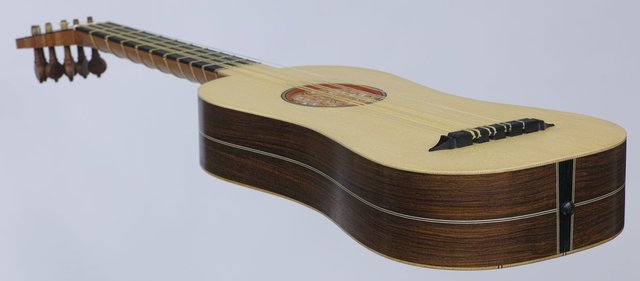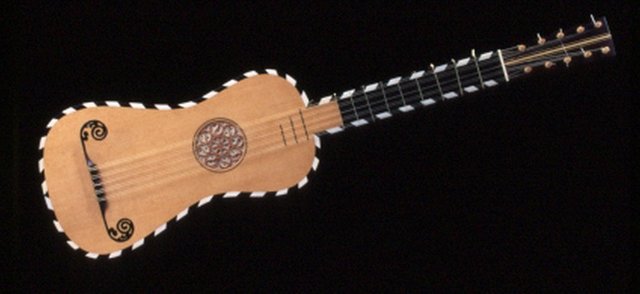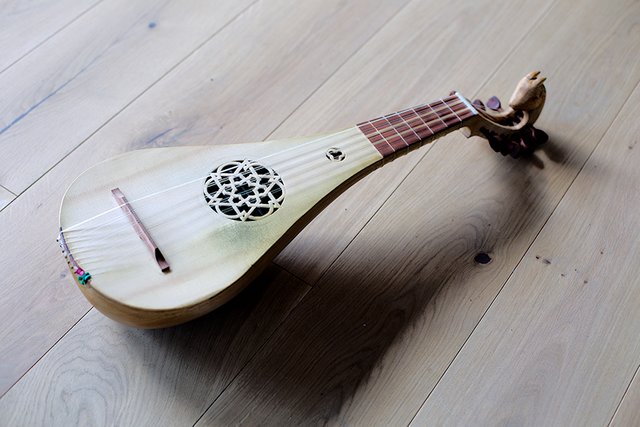The History of the Guitar (Part IIC): The Four-Course Guitar
The History of the Guitar (Part IIC): The Four-Course Guitar

It was in the start of the Renaissance again, that the four course guitar began to dominate. This was characterised by four pairs of double strings which are referred to as courses.
According to some research works, although the vihuela and the four-course guitar were both found in Spain in the sixteenth-century, they were two different instruments. With 10 frets, the instrument came much smaller than the vihuela.
While the differences were there, there were also similarities between the two instruments as the vihuela came almost the same way as the other with similarities in the intervallic pattern between the strings of the instruments except that the four course guitar has no first and sixth courses as with the other. Also, they differ in the tuning of their fourth courses.
This may be supported by the work of Juan Bermudo, before 1555 which stated thus:
Looking at the materials that have remained from the 16th century Spain, the four-course guitar wasn’t documented by many people except for a few like Mudarra’sSix Solos. Still, the instrument was still in use even into the seventeenth century.
The Four-Course Guitar in Italy

Another place with information on this instrument was Italy where it was known as the chitarra da setecorde. This was simply because the first cord was a single string. Also with 10 frets, ScipioneCerreto noted that they had the following tuning: g’g’/d’d’/f#’f#’/b’b’, and the pitches were high compared to what Juan Bermudo portrayed in his earlier work.
Still in Italy, the guitar got to be developed some more after it was employed to accompany the monody, which was a popular style of solo song. This also helped in stretching the guitar into the 17th century.
The Four-Course Guitar in France and England

There are some suggestions that in the 16th century, the 4 course guitar was known in places such as England and France as the gittern. This claim was quick to be dismissed by many that have studied the development of the instrument. The instrument was not only strung with gut and played with a pletrum, but it also had 2, 3, 4 or 5 courses.
Nevertheless, it is still believed in some classes that France had a large music production that went with the four-course guitar at the time, hence the guiterreor guiterne was the same as the instrument.
The only thing here was that the French invented or brought in a style of the insertion of solos to act as parts in ensemble versions of pre-existent pieces. The instrument got to grow in France mainly because it was supported by the royalty. This is most especially as Henry II was a fan of music publishing.
Because of this, books were published on the instrument, although with various alterations. Because of this, it was able to gain grounds in France from the fifteenth to the nineteenth centuries.
It was from France that the guittern was claimed to have moved to England where it also gained acceptance probably because of the acceptance of the French Music through the English Aristocracy.
Generally what had helped the four course guitar to gain acceptance and to survive was due to its simplicity when compared to those before it. Nevertheless, soon the five course guitar came as the need to change and improve in music and its instruments continued.
Some class of the modern guitarists now believe it will be worth working on music of the instrument into the modern ones. On the other hand, others believe it will only destroy the music and its elegance.
The obvious thing is that transcribing the music may not meet the earlier standard, but there are many reasons to attempt it.

Love playing the guitar! specially during the holidays.

In that case, every day is a holiday! @copetedavid
really good music. thank you for sharing post.
Beautiful instrument!
What kind of strings do you use on it?
I wouldn't be surprised if it were gut strings! @dharmakaya